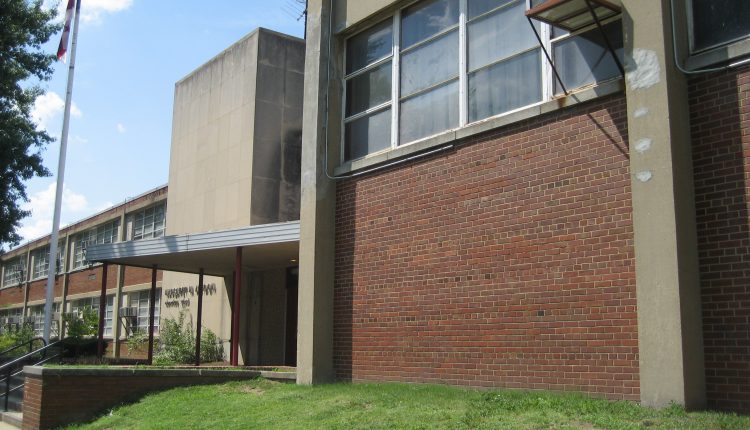
Rose Shelton: Gentrification and its polarizing effects on our neighborhood school
When I transferred my children from their DC charter school into our neighborhood school last year — Southwest’s Amidon-Bowen Elementary — I was seeking diversity and community.
But having made the switch to our racially diverse neighborhood school, I was shocked at how polarized the school was and at the impact that polarization was having on students. This was not the fault of the school, but was rather a direct reflection of the division the community was experiencing due to gentrification.
 I heard stories from black folks about how the school system now responds to the school’s needs because white children are attending the school and have moved into the community. I heard from black parents that the DC Public Schools system’s efforts were focused on early childhood education — you know, where the white children are — and that the predominantly black children and families in the older grades generally received different treatment, fewer resources and higher levels of punishment.
I heard stories from black folks about how the school system now responds to the school’s needs because white children are attending the school and have moved into the community. I heard from black parents that the DC Public Schools system’s efforts were focused on early childhood education — you know, where the white children are — and that the predominantly black children and families in the older grades generally received different treatment, fewer resources and higher levels of punishment.
At the same time, I heard from white families that they felt blamed for things they did not understand. Some also expressed fear of being seen as a white parent trying to “take over” the school, or taking actions that would match the stereotypes they heard from vocal and unhappy black parents.
My experiences have demonstrated to me that gentrification is not only about race and ethnicity, but also socioeconomic disparities. Even though I am a person of African descent, I sometimes missed the total impact gentrification was having in my community, especially on those who had been in my community longer than I. And while I moved back to DC to live near other people of color, I was contributing to gentrification. As I was enjoying the new restaurants, shops, conveniences, upgrades and renovations, it was hard to accept that I, too, might be part of the problem.
The stories in the community, just like in the school, were overwhelming. I heard stories from those I looked up to telling me about their long fight against the city and developers. Stories about how the DC government failed to listen to their concerns, voted against their desires and bullied them into changes they didn’t want; stories about losses in court, losses in hearings and losses in housing. I felt their pain, and I was sad to be enjoying the fruits of change because I began to understand at whose expense this was happening.
To an established community, gentrification is a clear sign that outsiders want your space, your land, your community, but not you. They would even prefer you move out to make more room. And if you do not move voluntarily, they will work with the government to make this happen — the same government that found you not worthy enough to invest in, and that turned a blind eye to your needs and cries for revitalization of your schools, roads and housing. The same government that disregarded pleas to rezone some areas for row houses rather than more high-rises, or that hampered the efforts of longtime renters to buy their homes when owners were looking to sell to developers — yet now finds a way for programs to be extended to outsiders.
Hearing these stories, I felt conflicted, confused and powerless to help on any side, especially since the individuals themselves were not to blame, and yet all were being impacted. As the first African-American to attend my high school and a member of the first African-American family ever to live in my town, I have grown to understand both sides. I understand African-American frustrations and resentments toward change and more specifically at white people moving into the community. I also understand white residents not being cognizant of the resentment or the fear of change because they don’t have the experience of being African-American; this lack of understanding fosters their own frustrations.
But what I don’t understand is how no one has found a way for us to overcome the same fears and distortions I heard as a kid in the 1990s. As a member of a school community and as a parent, I did not know how we could deal with such a large issue stemming from past generations, especially when our schools are dealing with so many other issues, like the need for adequate and equitable funding, resources and staff. This cloud of inequity and disenfranchisement is bigger than any one of us.
I joined the PTA at my child’s school to make a positive impact. I wanted to understand what the issues were and how were they being addressed. When I joined the PTA, Kindred — an organization that helps diverse school communities work through issues of difference and inequity — was beginning its work at Amidon-Bowen. For us, joining Kindred was an intentional effort to break down divisions and to bring our school community together. But I strongly believe every diverse school community needs similar efforts.
In our case, the work is still ongoing. This is our school’s second year in the program, and parents who participated the first year with Kindred are now co-leading the groups as they address issues raised by school administrators, teachers and parents. Many parents who had never spoken or had interactions with one another now have close relationships. This year’s PTA leadership includes early childhood education parents — largely Caucasian — and upper-grade parents — predominantly African-American. They are working together to make sure they address the issues of every grade, race, gender and background. Conversations around race, gentrification and socioeconomics happen more often and without fear.
Inclusive school communities can be a mechanism for change. We are too often stuck in conversation around the individual choices that parents make based on what they think would help their children. But conversations also need to address the collective impact that these individual choices have.
Together, we need to learn to listen to one another; to value, trust and believe each other’s stories and pain; and to move forward toward a collective goal. Someone always benefits from our disconnection from and marginalization of one another — and it’s not our children. Collectively, we can be the force that changes social norms, systems and policies that foster the inequality and inequity that keeps us divided.
Rose Shelton is a resident of the Southwest Waterfront neighborhood in Ward 6 and is co-president of the Amidon-Bowen Elementary School PTA. The views expressed are her own. This commentary is based on remarks she made at a recent event on “Building Community in Diverse Schools,” hosted by IntegratedSchools.org.
About commentaries
The DC Line welcomes commentaries representing various viewpoints on local issues of concern, but the opinions expressed do not represent those of The DC Line. Submissions of up to 850 words may be sent to editor Chris Kain at chriskain@thedcline.org.


Comments are closed.